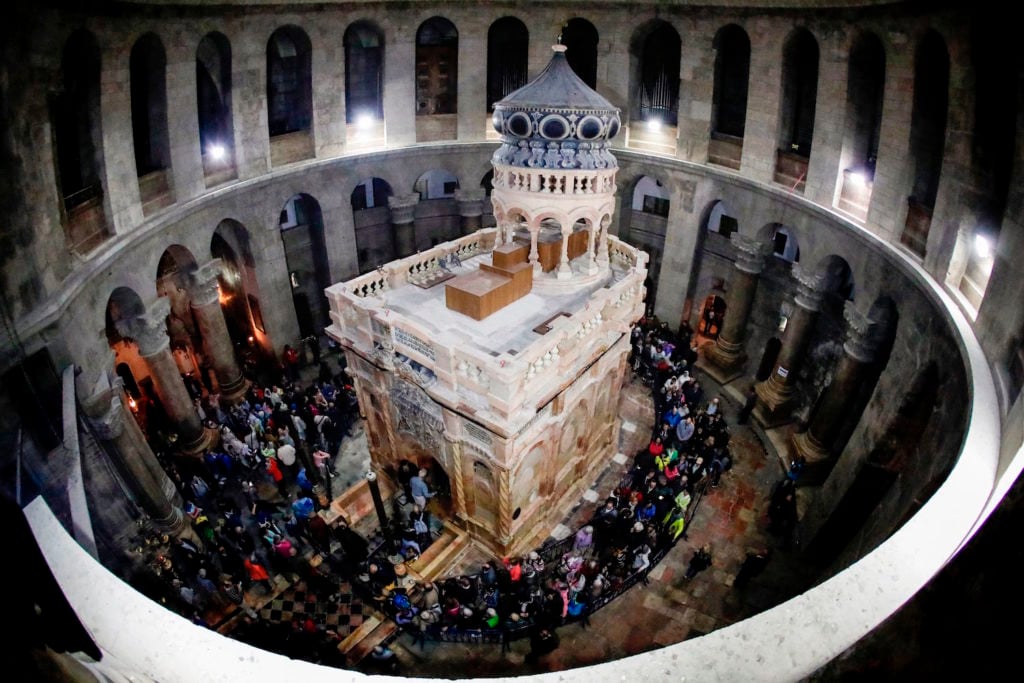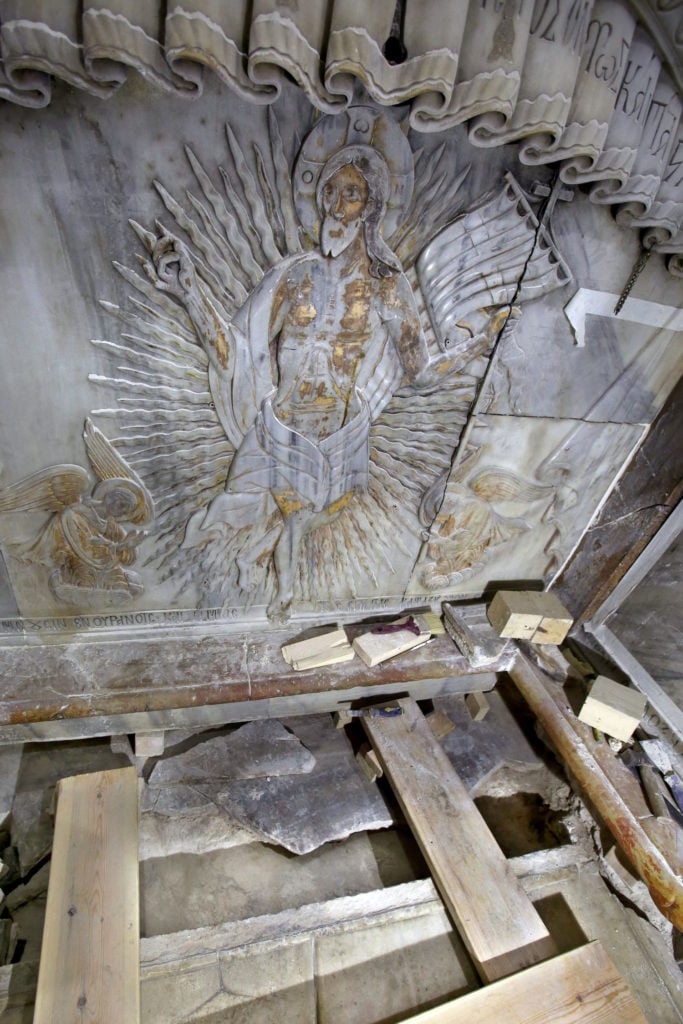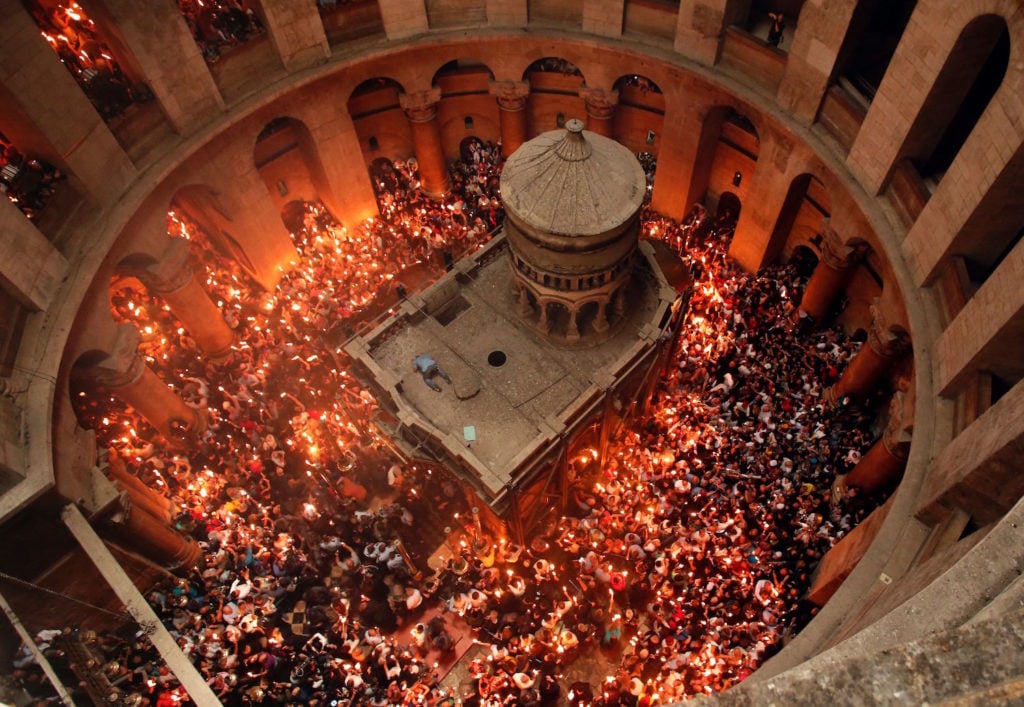Art World
A New Study Suggests That Jesus’s Tomb Is 700 Years Older Than Previously Thought
The research also lends support to the belief that the Church of the Holy Sepulchre in Jerusalem is the final resting place of Jesus.

The research also lends support to the belief that the Church of the Holy Sepulchre in Jerusalem is the final resting place of Jesus.

Sarah Cascone

New scientific testing adds credence to the long-held belief that the Church of the Holy Sepulchre in Jerusalem is the final resting place of Jesus Christ. But the tomb is about 700 years older than previously thought, built in the year 300, according to research from the National Technical University of Athens.
This aligns with historical belief that the Romans constructed a shrine on the site around the year 325 to mark the place of Jesus’s burial.
A cave inside the church contains a tomb known as the Edicule. The testing was carried out as part of restoration work that opened the tomb for the first time in centuries, last October. Beneath the marble slab that covers the tomb, thought to date from the 1300s, there was an even older piece of marble.

The Tomb of Jesus after it was exposed for the first time in centuries as part of conservation work on the Church of the Holy Sepulchre in Jerusalem’s Old City. Photo courtesy Gali Tibbon/AFP/Getty Images.
The team from the National Technical University of Athens dated the mortar beneath the lower slab to the year 345 using a process called optically stimulated luminescence, which determines when a substance was last exposed to light. Constantine the Great, the first Christian emperor of Rome who ruled from 306 to 337, is believed to have sent representatives to Jerusalem to find Jesus’s tomb.
“Obviously that date is spot-on for whatever Constantine did,” archaeologist Martin Biddle told National Geographic. “That’s very remarkable.”
“This is a very important finding because it confirms that it was, as historically evidenced, Constantine the Great responsible for cladding bedrock of the tomb of Christ with the marble slabs in the edicule,” said Antonia Moropoulou, the restoration project’s chief scientific coordinator in a statement reported by Agence France Presse.

Orthodox Easter ceremonies at the Church of the Holy Sepulchre in the Old City of Jerusalem. Photo courtesy of Thomas Coex/AFP/Getty Images.
The limestone church was later destroyed by Muslims in 1009 and subsequently rebuilt, leaving little evidence of its earlier history for scientists to study. Previous tests dated the structure only to the Crusader period, some 1,000 years ago.
Christians believe Jesus was the Messiah, crucified by the Romans in the year 33, as recounted in the New Testament of the Bible. There is currently no proof that Jesus was buried at the Church of the Holy Sepulchre, but the evidence does suggest that he could have been. The tomb contains a shelf known as a burial bed, which National Geographic described as “a common feature in tombs of wealthy 1st-century Jerusalem Jews.”
A documentary recounting these new findings, Secrets of Christ’s Tomb, will premiere on the National Geographic Channel on December 3 at 9 p.m. An accompanying exhibition, “Tomb of Christ: The Church of the Holy Sepulchre Experience,” is on view at the National Geographic Museum in Washington, DC, through fall 2018.